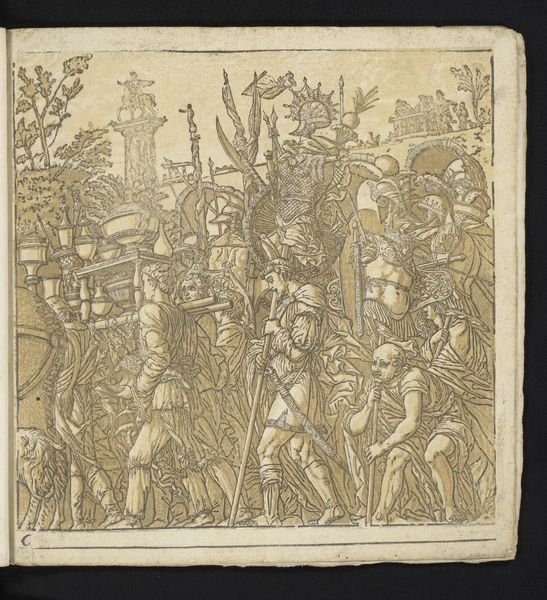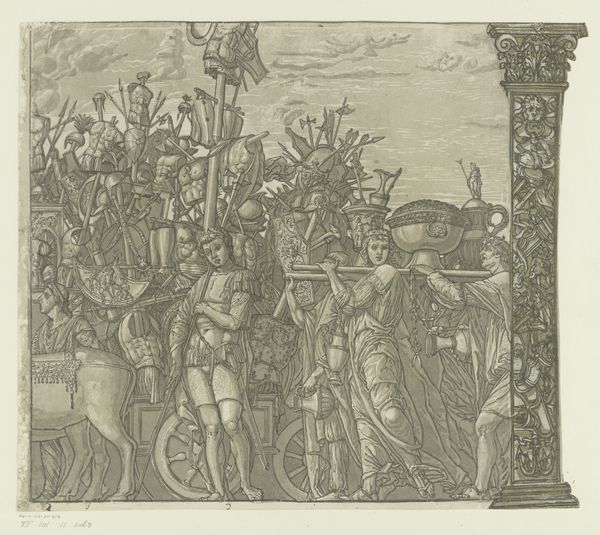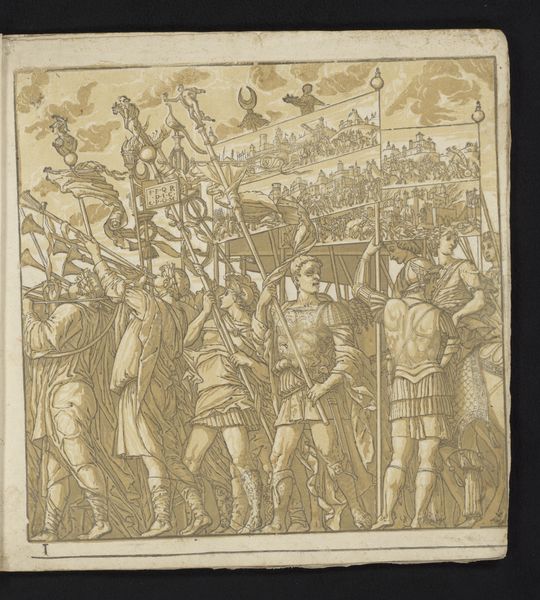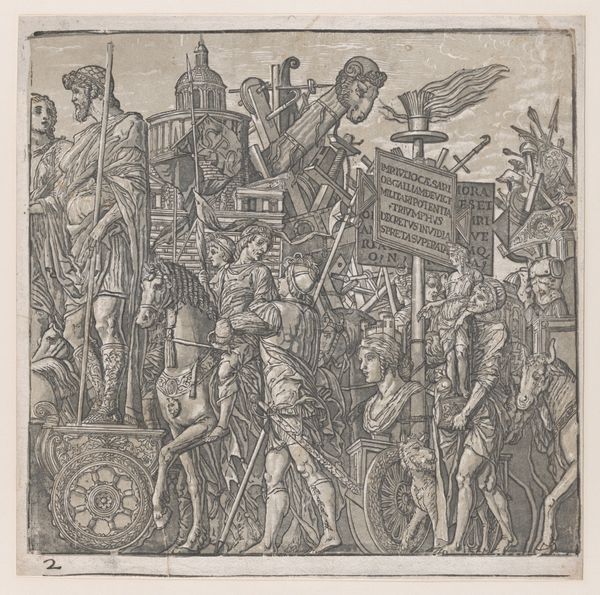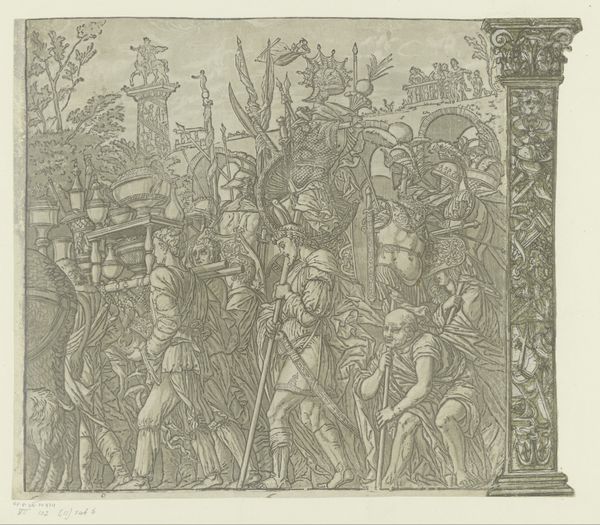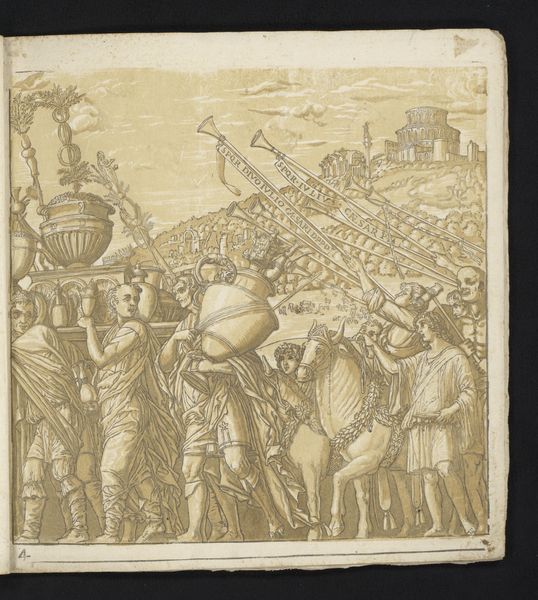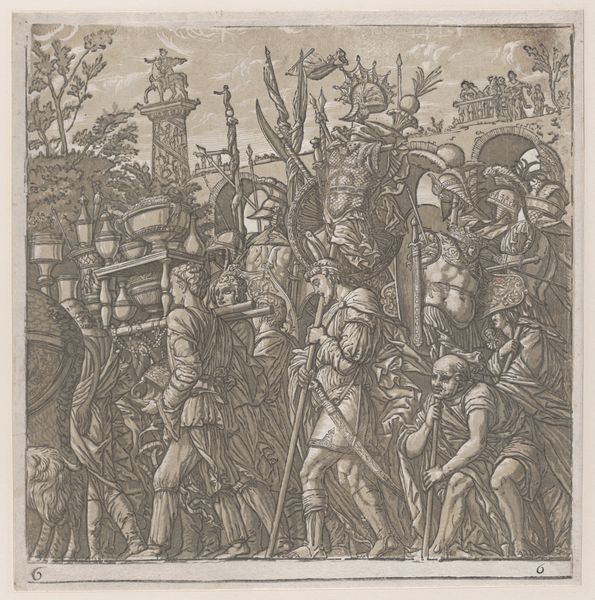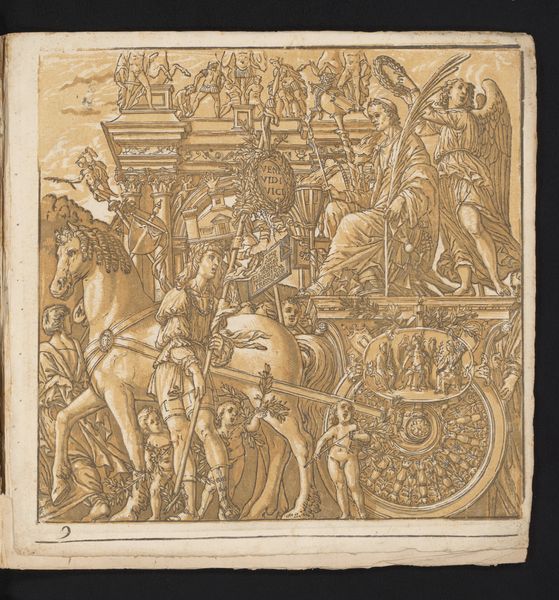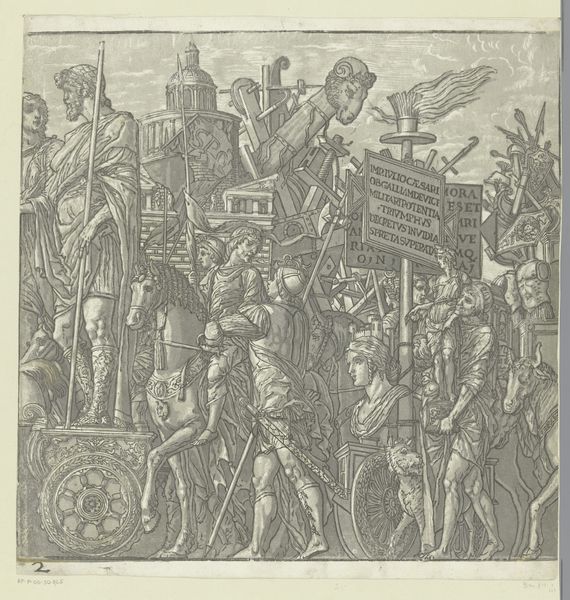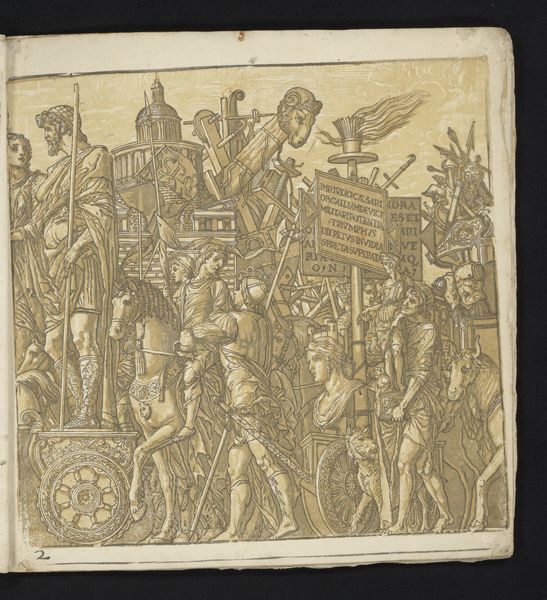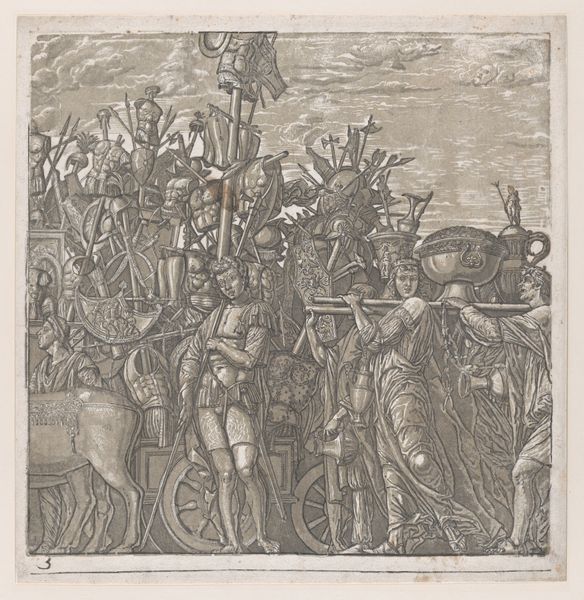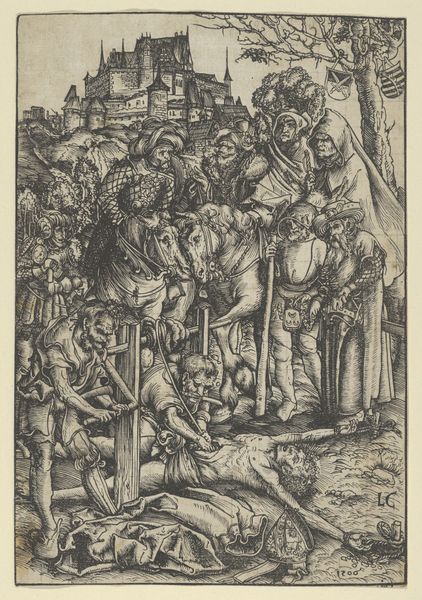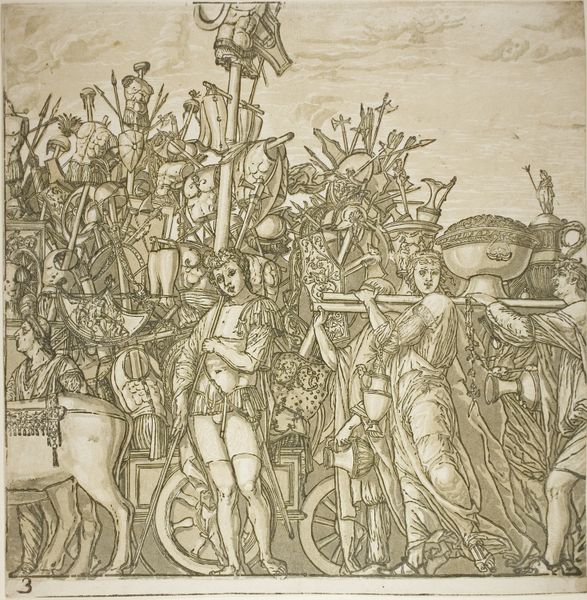
drawing, print, ink, engraving
#
drawing
#
narrative-art
#
pen drawing
# print
#
figuration
#
ink
#
history-painting
#
italian-renaissance
#
engraving
Dimensions: height 415 mm, width 400 mm
Copyright: Rijks Museum: Open Domain
Editor: This is Andrea Andreani's "Triumph of Julius Caesar," a print from 1599 housed in the Rijksmuseum. It looks like an engraving made with ink. There's an almost overwhelming amount of detail depicting soldiers, horses, and all kinds of trophies. It feels chaotic but also grand. What do you see in this piece? Curator: Beyond the impressive skill of the printmaking, I see a carefully constructed statement about power and its public performance. Triumphs in the Renaissance were about more than just victory; they were heavily orchestrated events, almost theatrical productions meant to solidify a ruler’s image. Consider how meticulously each element – the captured arms, the paraded figures – is rendered to impress upon the viewer the might and reach of Caesar, or rather, the patron who identifies with Caesar through the public display. Do you see the echoes of ancient Roman traditions in its staging? Editor: I do! The way they carry the spoils in a formal procession, it does feel very staged. Was it trying to convey anything deeper about 16th-century power? Curator: Absolutely. The act of creating and circulating an image like this becomes part of that power. Prints made these images accessible, allowing elites to disseminate these ideas beyond a single parade route. They could shape the very understanding of leadership, valor and legitimate rule. These were not neutral depictions; they were calculated maneuvers in the theater of power. Editor: So, it’s not just showing a triumph, but *performing* one through imagery. It makes you wonder about the impact these images had on shaping opinions back then. Curator: Precisely. Understanding art as a shaper of public perception, not just a reflector, is key. We've moved away from focusing solely on the artistic talent and recognized the artwork's participation in much broader social and political structures. Editor: I'll never look at historical prints the same way again. Thanks, it has been truly insightful.
Comments
No comments
Be the first to comment and join the conversation on the ultimate creative platform.
